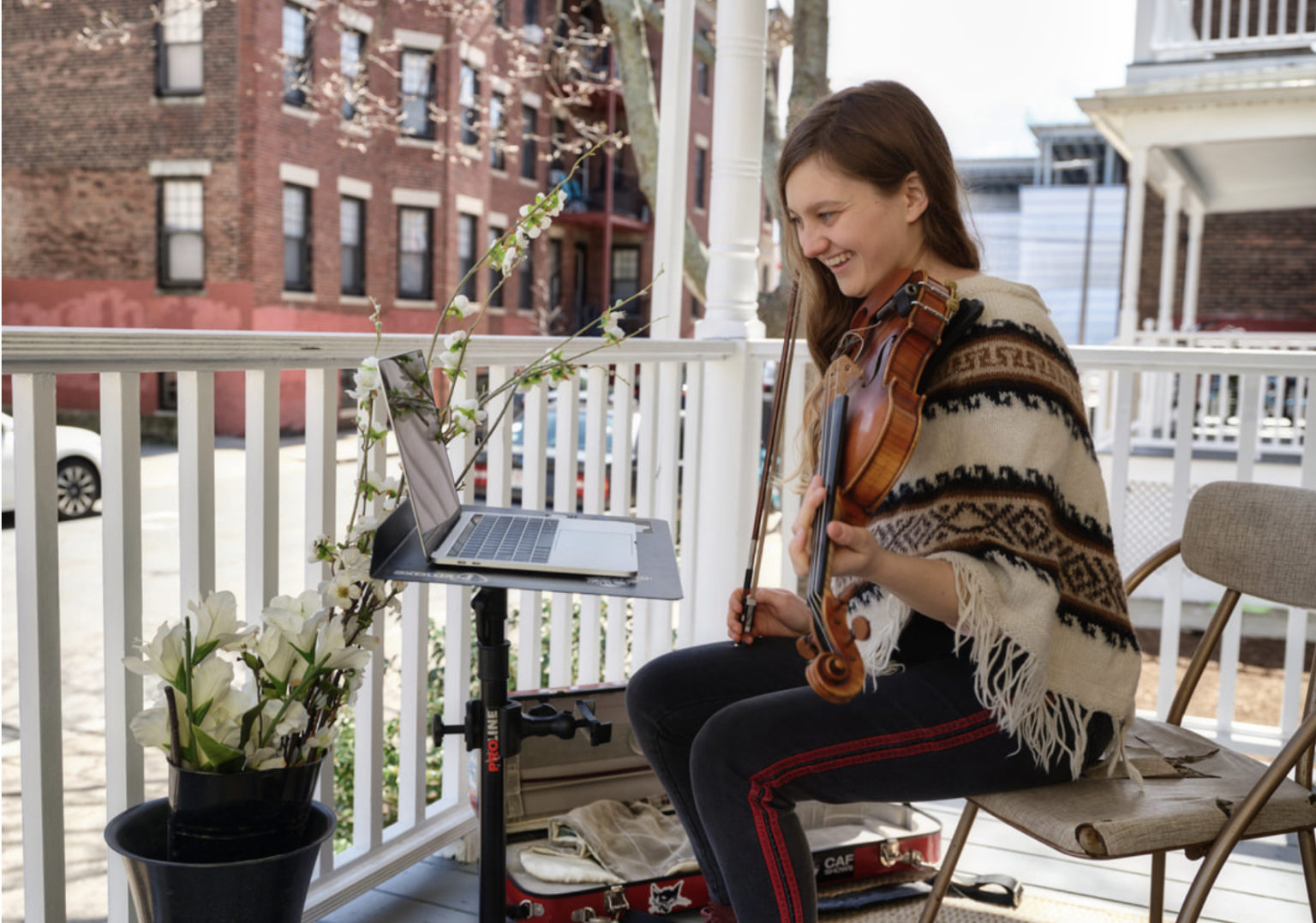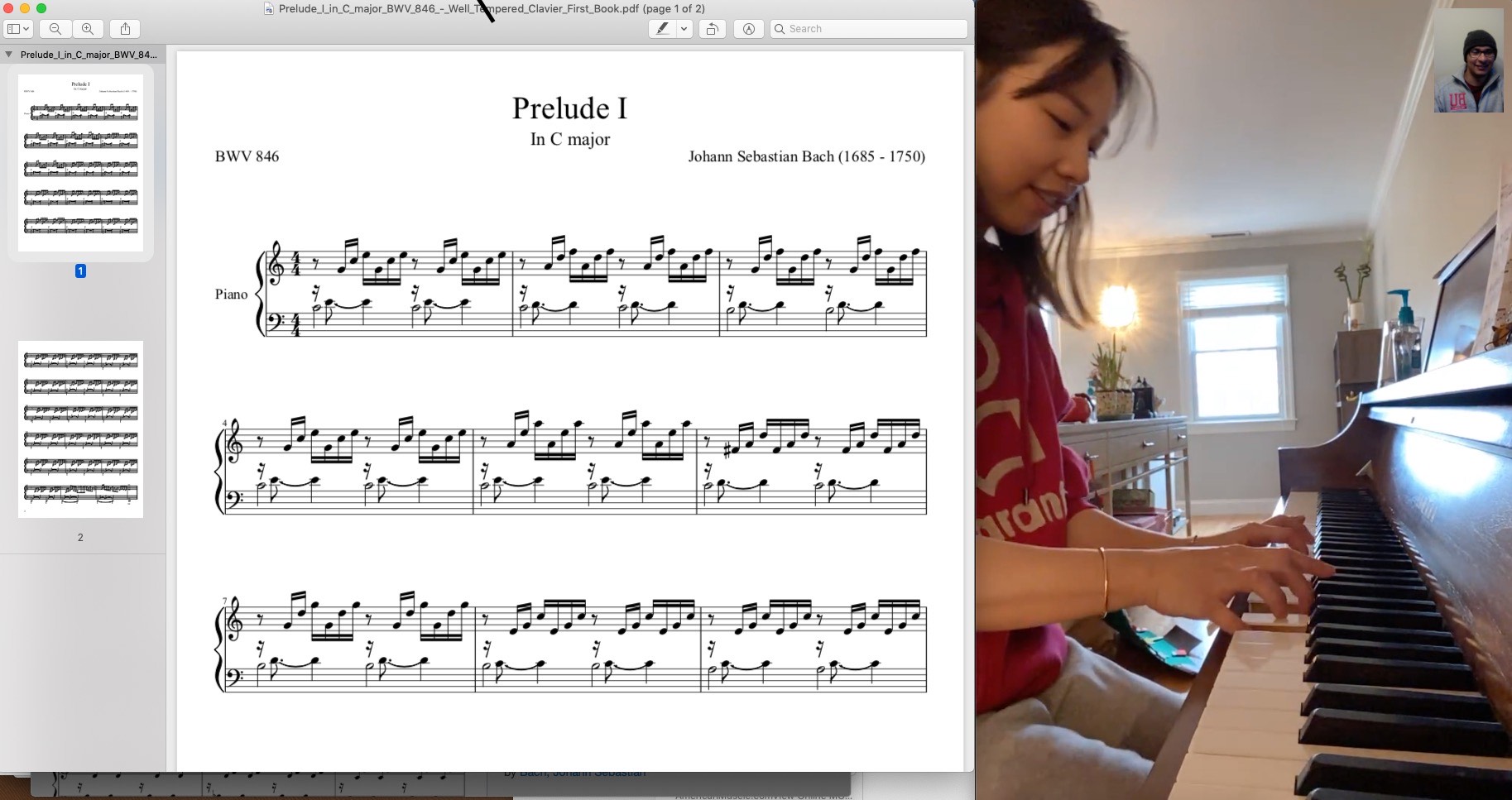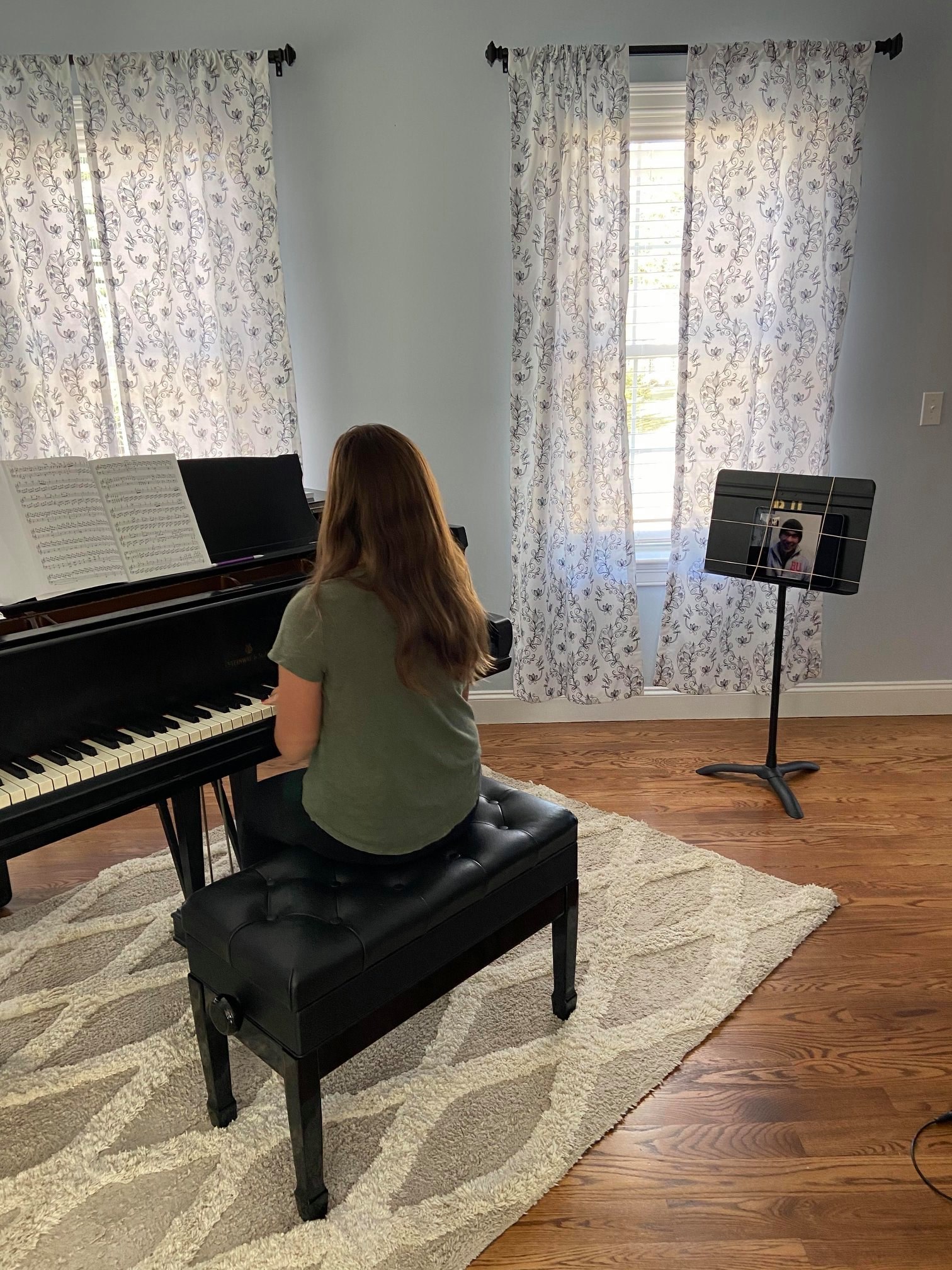How a Music School Tuned In To Online Classes

When the pandemic hit last spring, Renee Bordner wasn’t sure her business was going to make it. Students at her music school, Note-worthy Experiences, in Sudbury, MA, just outside of Boston, began dropping out as social distancing guidelines kicked in. While she was no stranger to using tech to enhance the school’s offerings, if it had once been an accompaniment, it was about to get a solo performance.
Virtual lessons take center stage
Note-worthy Experiences had previously used online lessons during inclement weather or when a student had a conflict, but the pandemic forced the studio to go completely virtual. Bordner focused her efforts transitioning the school’s 520 students to exclusively online instruction. These were mostly one-on-one lessons, with some small group lessons for bands and ensembles.
Bordner also made the decision to use the video platforms that worked best for the students. “It’s important to be flexible,” she says. “We found that some parents were already using Zoom for work, but the kids were using Google for school. So we go where they’re comfortable.”
The studio has dealt with technical challenges running music classes online. If one student has a slow internet connection, a lag in the video connection can make it hard for them to play with others. For some students, lesson times were changed to when fewer family members were online, so their Wi-Fi was less strained.
Social media plays a high note
Prior to the pandemic, Note-worthy Experiences used a random mix of Facebook, LinkedIn, Instagram, YouTube and Google to promote its offerings. But Bordner knew she would need to more carefully develop her social media presence. She worked to boost her business’ visibility on Facebook and Instagram by regularly posting photos and short videos of her students playing their instruments. She also began to post weekly practice tips.
The key to social media success has been keeping to a consistent schedule. On Mondays, Bordner posts to Instagram and Facebook as well as to the school’s Google business page and LinkedIn. On Thursdays, the teachers perform free live concerts on Facebook Live, and the shows are later added to the studio’s YouTube channel. On the 15th of every month, the school features different teachers, and these profiles are posted on all social media platforms.
Communication is the major key
Note-worthy Experiences had been using Constant Contact for several years for customized email communications for both current and potential students. Existing students and their families receive a monthly newsletter, and once a quarter, a targeted newsletter goes out to long-term leads.
“People tell me all the time when they receive our newsletter, it’s a reminder to pay their tuition,” Bordner says.
To ensure that she’s reaching the right people with the right tools, Bordner is able to monitor the open rate of emails.
Composing a new future
Despite the challenges of the last year, Bordner has appreciated some unexpected benefits from the necessary pivot to virtual classes. Notably, the school gets fewer cancellations.
“Some of our students, if they’re traveling, take an iPad and their guitar, and they still have their lesson. So we definitely see an increase in consistency,” she says.
There’s been an unexpected gain for certain students as well.
“Some of our students do really well with online lessons because they aren’t as anxious as they normally are playing for a teacher in person,” Bordner explains. “If they make a mistake, they somehow feel safer doing it in the comfort of their own home versus having the teacher right there on the piano bench with them.”
Bordner knows the music studio has learned to be more flexible in the last year, made possible by a steady push to integrate technology more fully into her business. And things are continuing to look up. More students have been enrolling, and she has been able to keep her staff of 55 music teachers employed.

